Recent High Notes
|
On Friday, Kentucky State Agriculture Commissioner James Comer succeeded in forcing
editor Bo Shaffer
All Rights Reserved 2014
Recent High Notes
|
On Friday, Kentucky State Agriculture Commissioner James Comer succeeded in forcing

Galleries display a beautiful grid of images right in the editor, just like they do in your published post.
FEATURED ARTICLE
OPINION: From Bitcoin to Beets
Posted on April 17, 2014 by Slow Money
 |
 |
By Woody Tasch
The recent collapse of Mt. Gox and the “inconvenience,” in its CEO’s words, caused by the disappearance of hundreds of millions of dollars of Bitcoin investors’ money, should make us all think about the history of finance and … organic beets.
 |
 |
We invented joint stock companies in 1600, came to what appeared to be an inexhaustible continent, took everything, cut it up into pieces and started selling it to strangers, only to find ourselves finally selling Ones and Zeros and Sliced and Diced Who-Knows-What Derivatives to invisible strangers. In milliseconds and in incomprehensibly large quantities.
Then came Bitcoin.
Then came Bitcoin “mining.”
 |
 |
Now, I could rant about the absurdity of roomfulls of servers, funded by venture capitalists, applying the extractive, industrial mentality of mining to the techno-seductiveness of virtual currency, but I’d rather talk about organic beets.
As in, thousands of us starting to invest in local, organic food enterprises—something startlingly common sensical yet seemingly radical in today’s byzantine world of hypersecuritized capital markets.
Under the improbable banner of something called Slow Money—let’s call it the polar opposite of Bitcoin—we are acting on the visceral sense that there is such a thing as money that is too fast, securities that are too abstract and complex, and companies that are too big. We are fermenting a peaceable little non-technological revolution in investing.
 |
 |
It’s as if we were taking all the macro numbers of economic growth—the Dow Jones Industrial Average, the Case Shiller Index, GDP, Consumer Confidence, the value of all the barrels of oil still in the ground—and throwing them into a jar along with some friendly bacteria of the Care of the Commons, Sense of Place, Diversity and Nonviolence Kind.
Over the last few years, the Slow Money network has put over $35 million into over 300 small food enterprises around the country (and a few in Canada, France and Switzerland), supporting small and mid-size organic farms and the many small food businesses that create jobs, revitalize Main Street, build carbon in the soil (where we want carbon, as opposed to in the atmosphere), improve health, and create fertility at the base of a restorative economy.
This is a small part of a larger movement that is asking: After all the globalization and financial razzmatazz, don’t we need to bring some of our money back down to earth?
 |
 |
A number of NGOs are emerging to rebuild local economies, including the Business Alliance for Local Living Economies, the Post-Carbon Institute and the Institute for Local Self-Reliance. Small new investment intermediaries are emerging too, including RSF Social Finance, Mission Markets and Farmland LP.
To fix our economy from the ground up, we need to do more than Buy Green and Buy Local. We need to do more than regulate the excesses of Too Big Too Fail. We need to Invest Local. We need to take a little of our money out of there—the abstract, complex, ultra-fast world of global investing—and put it to work here—near where we live, in things that we understand.
 |
 |
Food is a great place to start. Slow Money investments are supporting dairy coops, organic grain mills, regional food hubs, seed companies, restaurants that source locally, compost companies, niche organic brands, grassfed beef producers and more. Investments have ranged in size from a few million dollars to a few thousand dollars. Investors include experienced angel investors and family foundations, but are mostly just plain regular folks who want to know where their food comes from and where there money goes.
You may ask: Is this investing or is this philanthropy?
The answer is embedded in the experience that more than half a million Americans are having as members of CSAs—farms that sell shares of their production in advance of each season. I’ve asked thousands of CSA members around the country: How many of you ever calculated quantitative metrics supporting your decision to join a CSA—food miles, price, nutrient density, pesticide levels, organic matter in the soil or any other such factors? In many years of asking this question, only a few people have raised a hand and said they had done any such calculating.
 |
 |
This suggests that hundreds of thousands of Americans are using a sense of innate value to pre-pay for food from a local farmer. They are entering into an arrangement that is part investment decision, part consumption decision, part transaction, part relationship, part capitalism, part socialism, both deeply conservative and deeply liberal.
This is where we must head if want a healthy economy. Away from Bitcoin and towards beets. Away from anonymous transactions and towards healthy relationships. Away from computer screens and towards farms and fertility. Beyond financial diversification and towards diversity—ecological diversity, cultural diversity, economic diversity.
 |
 |
Because, after all, what is more diverse than a gram of fertile soil, with its billions of micro-organisms and thousands of species, most of them not yet named?
Posted on April 17, 2014 by Slow Money

Thank you for a SOLD OUT EXPO!!! We had a great time and an awesome event from the speakers to the sponsors to the exhibitors to the people who bought tickets.

Keep an eye out here for upcoming events including Hemp Seed Revival which we’ll be doing at Avo’s in Fort Collins on June 7th as well as The Colorado Hemp Expo which will be in October at a Denver location.
Contact us at hemp@coloradohempcompany.com or 970-581-5049

Conservative Republican Senator Mitch McConnell
was instrumental in passing the recent farm bill with
provisions for the cultivation of industrial hemp.

Video Clips from NOCO 2014
Mara Brosy-Wiwchar – Assistant to Congressman Jared Polis
brings us up to date



|
|
Summer Star Haeske has spent many years working alongside the ‘pioneer of hemp’ in the United States, Ms Barbara Filippone (her mother) in all areas of the hemp industry. She was an essential ingredient in the opening of EnviroTextiles more than eleven years ago and has assisted in all phases of the company as well as the development, sales and importation of hemp textiles.
Summer’s responsibilities include maintaining production for EnviroTextiles stock , new product development, Sales & Marketing as well as International and Domestic Transport codes and logistics worldwide. Summer Star is currently supervising our sales team overall and is passionate about marketing hemp for a better sustainable future. As a current board member of HIA (Hemp Industries Association) she continues to educate the public about the product’s environmental, health, and biological advantages.
|
|
|
Enviro-Fiber Foam™ is our latest naturally developed product. We combined the durability of coconut fiber with a natural latex to produce a multi-purpose high density “green” fiber foam product. Enviro-Fiber Foam™ is the first eco-friendly alternative to Polyurethane Foam.
The applications for Enviro-Fiber Foam™ include any traditional fiber foam application, such as mattress padding, upholstery padding, sound proofing, etc..The ceiling tiles in the image to the left are built from our rigid natural foam. Other application possibilities for our fiber foam may include:
• Composite
• Car panels
• Seating
• Wall Paneling
• Soundproofing
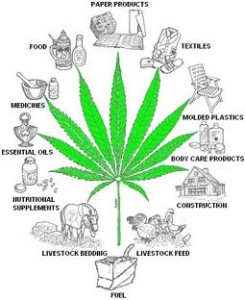
Hemp Textile Properties
As the premier plant fiber, True Hemp or Cannabis sativa has served mankind for thousands of years. This venerable fiber has always been valued for its strength and durability. Materials made from hemp have been discovered in tombs dating back to 8,000 B.C.E. Christopher Columbus sailed to America on ships rigged with hemp. Hemp was grown extensively in colonial America by numerous farmers including George Washington and Thomas Jefferson. Betsy Ross sewed the first American flag from hemp.
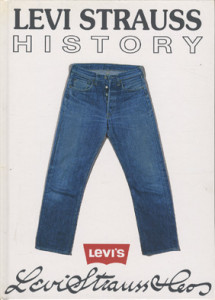

In fact, its combination of ruggedness and comfort were utilized by Levi Strauss as a lightweight duck canvas for the very first pair of jeans made in California.

For thousands of years hemp was traditionally used as an industrial fiber. Sailors relied upon hemp cordage for strength to hold their ships and sails, and the coarseness of the fiber made hemp useful for canvas, sailcloth, sacks, rope, and paper.

While hemp fiber was the first choice for industry, the coarseness of the fiber restricted hemp from apparel and most home uses. Hemp needed to be softened. Traditional methods to soften vegetable fibers used acids to remove lignin, a type of natural glue found in many plant fibers. While this method to remove lignin worked well with cotton or flax, it weakened the fibers of hemp and left them too unstable for use. Hemp therefore remained as an industrial fabric.
In the mid 1980’s, researchers developed an enzymatic process to successfully remove lignin from the hemp fiber without compromising its strength.
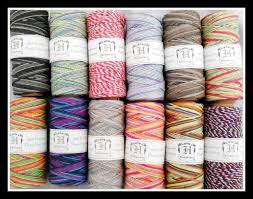
For the first time in history, de-gummed hemp fiber could be spun alone or with other fibers to produce textiles for apparel. This technological breakthrough has catapulted hemp to the forefront of modern textile design and fashion. Given hemp’s superiority to other fibers, the benefits of this breakthrough are enormous.
Superior Properties
Hemp fiber is one of the strongest and most durable of all natural textile fibers. Products made from hemp will outlast their competition by many years.

Not only is hemp strong, but it also holds its shape, stretching less than any other natural fiber. This prevents hemp garments from stretching out or becoming distorted with use. Hemp may be known for its durability, but its comfort and style are second to none. The more hemp is used, the softer it gets. Hemp doesn’t wear out, it wears in. Hemp is also naturally resistant to mold and ultraviolet light. Due to the porous nature of the fiber, hemp is more water absorbent, and will dye and retain its color better than any fabric including cotton.
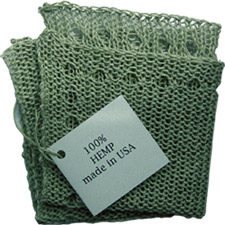
This porous nature allows hemp to “breathe,” so that it is cool in warm weather. Furthermore, air which is trapped in the fibers is warmed by the body, making hemp garments naturally warm in cooler weather.
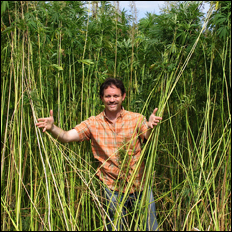 |
|
Environmental Advantages
Hemp is an extremely fast growing crop, producing more fiber yield per acre than any other source. Hemp can produce 250% more fiber than cotton and 600% more fiber than flax using the same amount of land. The amount of land needed for obtaining equal yields of fiber place hemp at an advantage over other fibers.
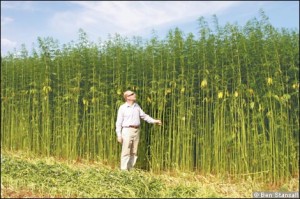
Hemp grows best in warm tropical zones or in moderately cool, temperate climates, such as the United States. Hemp leaves the soil in excellent condition for any succeeding crop, especially when weeds may otherwise be troublesome. Where the ground permits, hemp’s strong roots descend for three feet or more.
The roots anchor and protect the soil from runoff, building and preserving topsoil and subsoil structures similar to those of forests. Moreover, hemp does not exhaust the soil. Hemp plants shed their leaves all through the growing season, adding rich organic matter to the topsoil and helping it retain moisture. Farmers have reported excellent hemp growth on land that had been cultivated steadily for nearly 100 years.
copyright 2014

Maija Szymanowski works at a stand at Pike Place Market Thursday, Feb. 6, 2014 in Seattle that sells body-care products including lotions, salves, and serums made in Washington state with hemp that is grown in Canada. With recreational marijuana use now legal in Washington, state legislators are discussing whether the state should also launch an industrial hemp industry.
SPOKANE, Wash. — With recreational marijuana use now legal in Washington, state legislators are eyeing whether the state should also allow an industrial hemp industry.
Hemp, like marijuana, comes from the cannabis plant but has much less THC, the active ingredient in marijuana that makes people high. The hemp plant has thousands of industrial uses and could provide a new cash crop for farmers.

The state Senate is considering a bill that would authorize Washington State University to study the feasibility and possible value of an industrial hemp industry in Washington.
“We have a long tradition of hemp usage on our country,” said State Sen. Jeanne Kohl-Welles, D-Seattle, a sponsor of the bill. “The Declaration of Independence was written on hemp paper.”
The federal government outlawed hemp decades ago as part of its efforts to stop marijuana production and use, Kohl-Welles said.
Several people spoke in support of the bill at a recent hearing by the Senate Agriculture, Water and Rural Economic Development committee.
Aimee Warner, a member of the Washington Hemp Industry Association, said the crop would grow well in the state’s climate.
“Our farmers are ready to, and need to, start putting industrial hemp seeds into the ground immediately,” Warner said. “There is an irrational fear of this historically persecuted crop.”
Chris Mulick, a lobbyist for Washington State University, said the college is “eager to help the state understand the viability and profitability of growing industrial hemp.”
But he warned the university must comply with U.S. laws in order to keep receiving federal research funds and student aid dollars.
Mark Streuli of the state Department of Agriculture said that agency also supports hemp cultivation.
“We think if there’s a prospect of a crop out there that enhances the viability of agriculture in Washington state, we support that,” Streuli said.
There is no organized opposition to the hemp study bill, which passed the committee and was sent to the Ways and Means Committee.
In 2012, Washington residents passed Initiative 502, which legalized recreational marijuana and, coincidentally, gave new life to the hemp movement.
In other countries, hemp is used to make thousands of different products, including clothing, food, beauty products and biofuels. The plants provide high yields with relatively few growing costs, Kohl-Welles said.
Canada legalized hemp cultivation in the 1990s, and Kohl-Welles believes the crop would provide a big boost to farmers in the U.S.
One of the most beneficial products could be biofuels, as hemp is more efficient than corn for making such fuels, she said.

Some committee members wondered if unlicensed marijuana grows could be illegally concealed in hemp fields. But people who testified at a hearing said marijuana plants are thick and bushy while hemp plants are tall and thin.
Joy Beckerman Maher, who has been pushing for hemp legalization for decades as a member of the Hemp Industries Association, stressed that industrial hemp does not get people high.
“The only feeling you would get is an awful headache,” Maher said.
The new national Farm Bill allows hemp cultivation to begin for research purposes. Such studies must be concluded by next January. Ten states have approved hemp production, including California and Oregon.
John Novak of Lake Forest Park, a member of the Cannabis Action Coalition, said legalization of hemp “will do more to end the federal war on cannabis.”
“In the end you are going to find more tax dollars from it,” he told the committee.
Top of Page
http://finance.yahoo.com
© Copyright (c)


Organic Cosmetics
Founder of Aveda Products and Intelligent Nutrients, Horst is both a visionary business leader in the field of cosmetics and ecopreneur that has long been a proponent of organic ingredients in all his products. He applies his eastern teachings and philosophy of wholeness and smart earth policies to how he runs his business.

Hemp Oil Body Care
SPOKANE, Wash. — Maija Szymanowski works at a stand at Pike Place Market Thursday, Feb. 6, 2014 in Seattle that sells body-care products including lotions, salves, and serums made in Washington state with hemp that is grown in Canada. With recreational marijuana use now legal in Washington, state legislators are discussing whether the state should also launch an industrial hemp industry.
Medical cannabis has several potential beneficial effects. Cannabinoids can serve as appetite stimulants, antiemetics, antispasmodics, and have some analgesic effects, may be helpful treating chronic non-cancerous pain, or vomiting and nausea caused by chemotherapy. The drug may also aid in treating symptoms of AIDS patients.
Medical Wiki
Hemp Textile Properties
As the premier plant fiber, True Hemp or Cannabis sativa has served mankind for thousands of years. This venerable fiber has always been valued for its strength and durability.


Cannabis Does Not Reduce Pain, It Makes It More Bearable
Last updated on Tuesday 18 June 2013
Originally published on Monday 24 December 2012
http://www.medicalnewstoday.com
Cannabis Does Not Reduce Pain, It Makes It More Bearable
Using cannabis for pain relief does help, however, it makes pain more bearable rather than getting rid of it, researchers from Oxford University’s Centre for Functional Magnetic Resonance Imaging of the Brain (FMRIB) reported in the journal Pain.
The authors added that people in pain act differently to cannabis, according to their brain imaging study.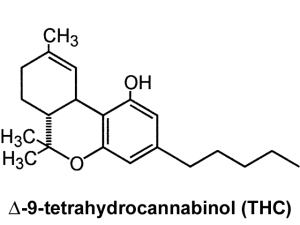
The principal psychoactive constituent of cannabis is called tetrahydrocannabinol (THC). The researchers found that when volunteers took oral tablets of THC, they tended to find the experience of pain more tolerable. There was no evidence that THC reduced pain intensity.
Several studies have found that cannabis is associated with some kind of improvement in pain symptoms. Researchers from McGill University Health Centre (MUHC) and McGill University reported in CMAJ in 2010 that patients with chronic neuropathic pain experienced pain relief, improved mood and better quality sleep after smoking cannabis.
Scientists from Imperial College London found that Cannador, another cannabis plant extract, effectively relives pain after major surgery. They reported their findings in the journal Anerthesiology.
Researchers from the Mayo Clinic, however, said medical marijuana is not recommended for teenagers with chronic pain.
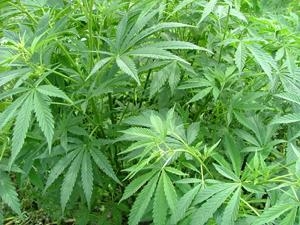
THC is one of 400 compounds found in the Cannabis plant
According to MRI brain imaging scans in this latest study, areas of the brain that interpret pain were not affected significantly when people took THC. It appears that cannabis affects people’s emotional state in a way that makes pain less awful.
Lead researcher, Dr Michael Lee, said:
“We have revealed new information about the neural basis of cannabis-induced pain relief. Cannabis does not seem to act like a conventional pain medicine. Some people respond really well, others not at all, or even poorly. Brain imaging shows little reduction in the brain regions that code for the sensation of pain, which is what we tend to see with drugs like opiates. Instead cannabis appears to mainly affect the emotional reaction to pain in a highly variable way.”

Health care professionals and administrators say that chronic (long-term) pain is a complex healthcare problem. In order to help patients effectively manage their pain, different approaches are needed, which can include physical therapy, psychological support, and medications.
For a number of patients who have not responded adequately to drugs, cannabis or cannabis-based medications are an effective way of controlling their pain. Many, however, report no benefits from cannabis and some undesirable side effects.
Dr. Lee said “We know little about cannabis and what aspects of pain it affects, or which people might see benefits over the side-effects or potential harms in the long term. We carried out this study to try and get at what is happening when someone experiences pain relief using cannabis.
Our small-scale study, in a controlled setting, involved 12 healthy men and only one of many compounds that can be derived from cannabis. That’s quite different from doing a study with patients. My view is the findings are of interest scientifically but it remains to see how they impact the debate about use of cannabis-based medicines. Understanding cannabis’ effects on clinical outcomes, or the quality of life of those suffering chronic pain, would need research in patients over long time periods.”
Dr. Lee and team carried out several MRI scans on 12 participants at the FMRIB center in Oxford, England.
The volunteers were divided into two groups:
• The THC group – participants were given a 15 mg THC tablet. THC is one of 400 different compounds found in the cannabis plant. It is the one that gives recreational smokers the “high”.
• The placebo group – the participants were given a dummy drug that looked just like the tablet those in the other group were taking
Then the groups were swapped, so that each participant eventually had been tested with THC and placebo.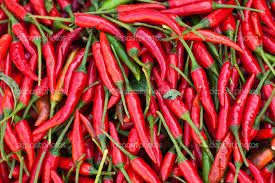
The volunteers had either 1% capsaicin cream rubbed on the skin of one leg, or a dummy cream. Capsaicin is the ingredient of chillies; when rubbed on skin it causes a burning, painful sensation. Then the ones who received the dummy cream received the 1% capsaicin cream and those that had received the pain-inducing cream received the dummy cream.
In all, each participant underwent four situations:
• They took a THC tablet and had the pain-inducing cream applied to their skin.
• They took a THC tablet and had the dummy cream applied to their skin.
• They took a placebo tablet and had the pain-inducing cream applied to their skin
• They took a placebo tablet and had the dummy cream applied to their skin
In each different situation they had an MRI scan – a total of four scans per participants.
They were asked to describe the intensity and unpleasantness of their pain in each situation. The volunteers had to describe how intense the burning sensation was, and how much of a bother the pain was.
They found that with THC, many of the volunteers said the pain bothered them less, but did not report any change in the burning sensation.
Even though their findings showed that THC’s average effect was statistically significant, people’s reaction to pain after taking the compound varied considerably. Half of them reported a “clear change in how much the pain bothered them.”
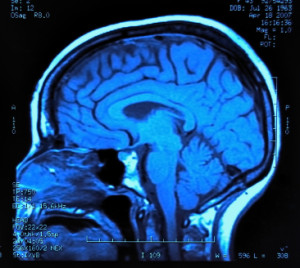
The participants’ reports regarding how unpleasant their pain was were backed up by MRI scan results. An area in the bran called the anterior mid-cingulate cortex, which has many functions, including the emotional aspects of pain, became less active after participants took THC.
The scans also showed that activity changed in the right amygdala, which correlated with the reduction in the unpleasantness of the pain after people had taken THC. Experts already know that pain can “prime” the right side of the amygdala.
The scientists were particularly interested in how closely the right amygdala and the primary sensorimotor area (a part of the cortex) were connected. The strength of the connection between these two brain areas correlated well with the THC’s varying effects on the pain the participants had reported.
The scans may help doctors predict who may benefit from taking cannabis for the relief of pain, the authors wrote.
Dr. Lee said:
“We may in future be able to predict who will respond to cannabis, but we would need to do studies in patients with chronic pain over longer time periods.”
Written by Christian Nordqvist
Copyright: Medical News Today
http://www.medicalnewstoday.com

Medical Marijuana for Arthritis Treatment and Arthritis Pain
Medical marijuana contains powerful anti-inflammatory compounds as well as natural analgesics, providing a one-two punch that makes medicinal marijuana an excellent part of an arthritis treatment plan. Medical marijuana can relieve joint pain while at the same time reducing the inflammation that precipitated that pain. Rheumatoid arthritis, osteoarthritis, and even juvenile arthritis may be treated with the help of cannabinoids naturally occurring in marijuana.
Medical Marijuana is an Effective Treatment for Arthritis Pain and Inflammation

27 million Americans have osteoarthritis, the most common form of arthritis. This condition, also known as degenerative joint disease, causes breakdown of joint cartilage resulting in pain and inflammation where bare joints rub together. A further 1.3 million Americans are living with rheumatoid arthritis, an autoimmune condition that causes severe pain. In addition, 300,000 children in America have juvenile arthritis. While most doctors do not recommend use of medical marijuana for young children, adults and older teens can treat their arthritis with medicinal marijuana.
In a 2005 study, THC and cannabidiol were found to produce notable improvements in pain, quality of sleep, and to reduce disease activity in patients with rheumatoid arthritis. Both these compounds are among the cannabinoids naturally occurring in medical marijuana. In 2000, researchers found that cannabidiol “effectively blocked progression of arthritis” in animal trials.
Although both these studies involve cannabinoids administered as drugs isolated from marijuana, medicinal use of cannabis by smoking, vaporizing, or eating, may be a better delivery method for the same potent analgesics and anti-inflammatories. When smoked, medical marijuana enters the smoker’s blood stream immediately and is distributed evenly. In addition, smoking medical marijuana provides the body with all the cannabinoids present in marijuana, not one or two isolated components. Thirdly, in some states patients can legally cultivate marijuana plants, but the average patient cannot extract cannabinoids from marijuana, meaning patients who choose drugs that isolate particular cannabinoids must remain dependent on the pharmaceutical industry for their medicine.
Choosing Medical Marijuana to Treat Your Arthritis and Pain

Before trying medical marijuana for your arthritis treatment, make sure medical marijuana is legal in your state, city, and county. If medicinal marijuana remains illegal in your area, consider getting involved in local efforts to legalize marijuana for medicinal purposes. If it is legal, talk to your doctor about writing a recommendation for medical marijuana. Some doctors have limited experience with medical marijuana and may recommend you see a medical marijuana specialist.
Once you have a recommendation in hand, you will need to acquire your medicine. You’ll need to either hire a medical marijuana caregiver or locate a medical marijuana dispensary in your area. Both options are not available in all areas, even where medical marijuana is legal. You may not have the option to use a dispensary or your medical marijuana caregiver may be forced to serve only a limited number of patients. Again, know your laws!

Disclaimer:This text is for informative purposes only and is not intended as a substitute for medical advice from a physician. Always consult your doctor before making any decision on the treatment of a medical condition.
Arthritis Today-Medical Marijuana
For a list of Medical Marijuana Clinics in the United States